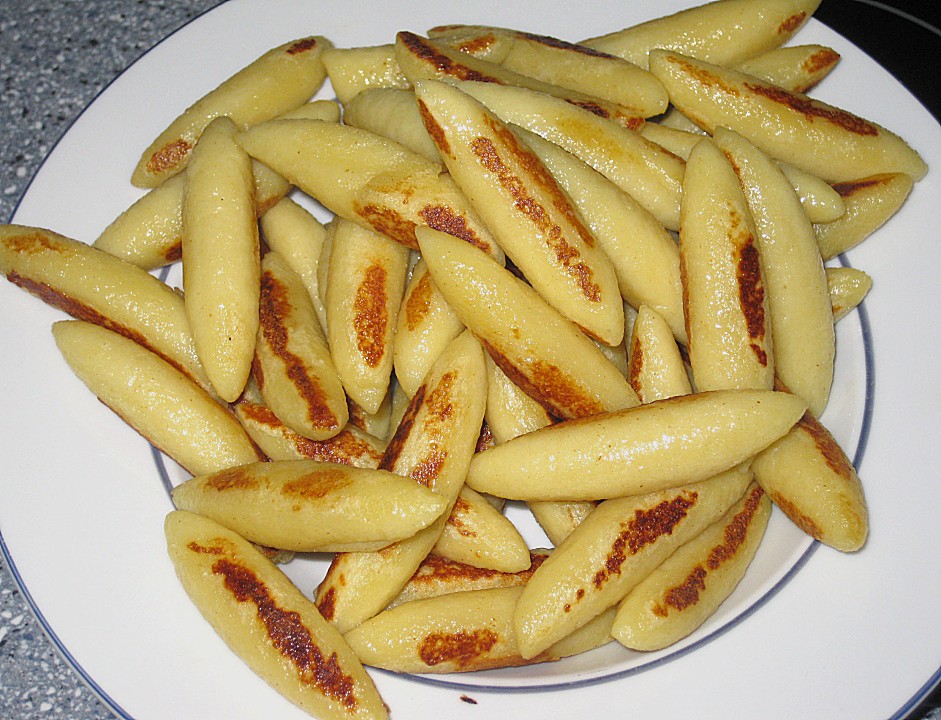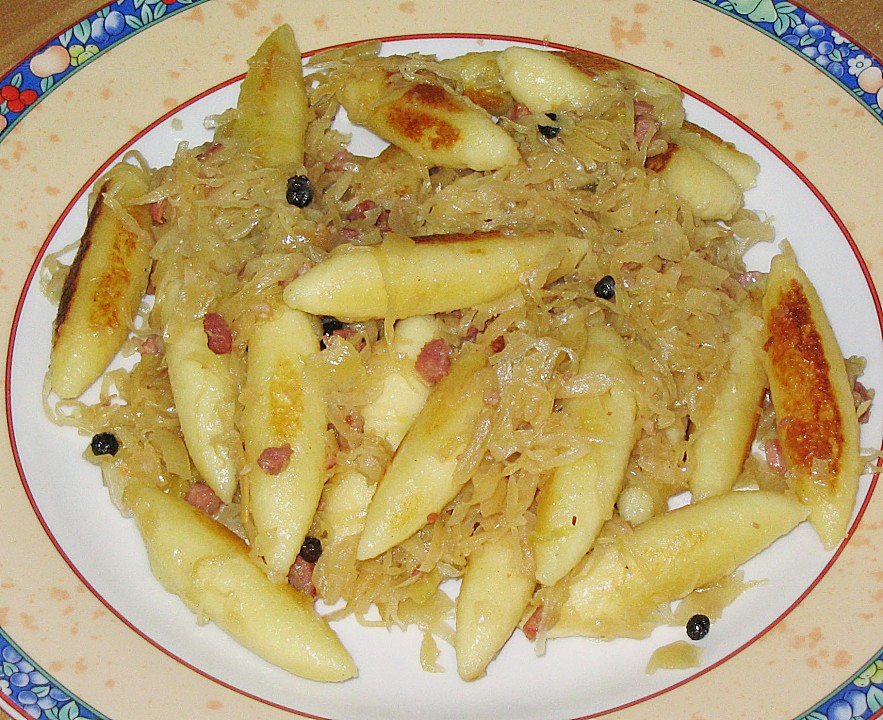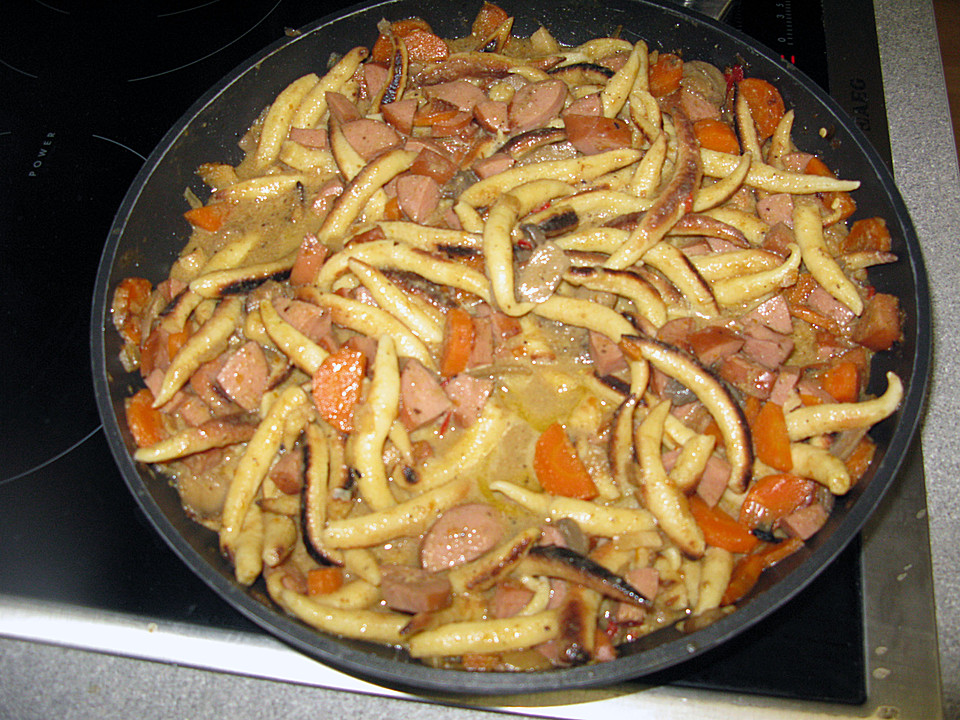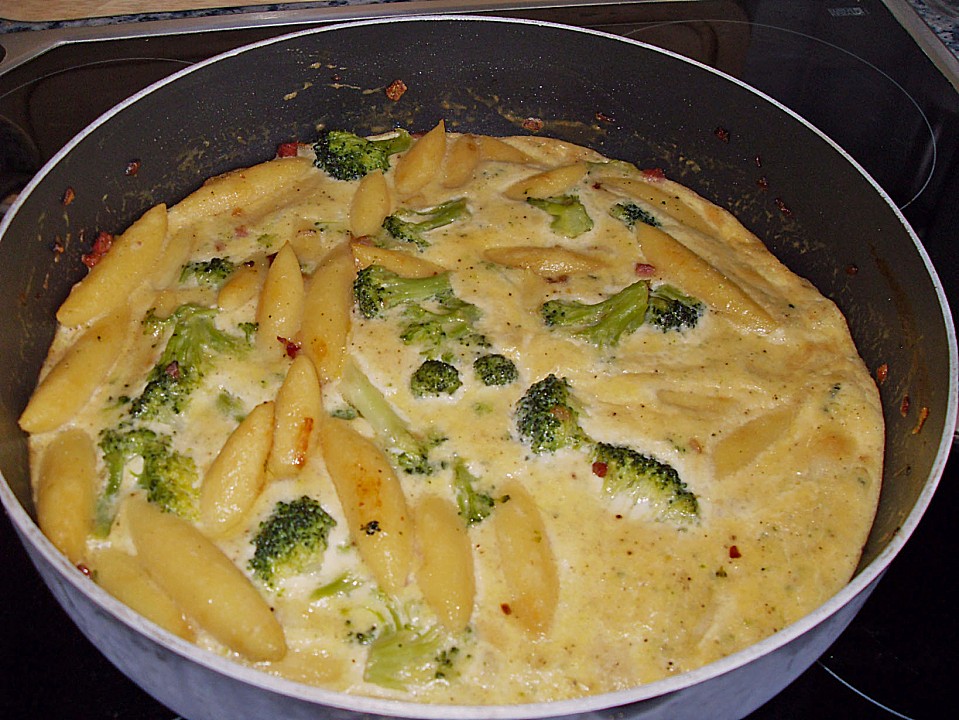Schupfnudel
Noodles or finger noodles are a dish from the southern German and Austrian cuisine, which is available in different regional names, recipes and variations from rye and wheat flour, eggs, and since the introduction of the potato in the 17th century with potato. Traditionally, they are molded by hand. They are often served with sauerkraut, but there are many, even sweet variations. They are similar to the cam ( Italian gnocchi ).
Etymology
The word " pasta " was originally a variation of dumplings ( see also Dampfnudel ) and thus part of a large stem German words that express the syllable kn - thickening (nodes, tuber, bud, knob, button ). The name on chopped or finger noodle refers to shaping and appearance of the pasta, not its composition.
Formation
Noodles were known as the court of the mercenaries already during the Thirty Years' War: The soldiers formed out of their allocated ration of flour and water elongated pasta that they were preparing then. With import and cultivation of the potato in the 17th century in Germany, the recipe has been extended and developed depending on the region, different recipes and cooking styles.
Regional designations
Noodles are particularly common in the Baden and Swabian cuisine, and from where comes the common name today in Germany noodles, or " rolled noodles ". In the Palatine and also based in the Alemannic kitchen is the designation Bubespitzle ( because of the similarity of the noodles with a boy penis) and Baunzen. In the ( old) Bavarian cooking the noodles in the Upper Palatinate also Schopperla or Schoppalla are also noodles, but also called finger noodles, Dràdewixpfeiferl or potato or Erdepfebaunkerl. In the kitchen of Vorarlberg noodles are mostly known as Grumpieranüdile. In the Odenwald hot noodles cabbage noodles, in the Palatinate Buwespitzle, similar to a name in the Alemannic kitchen (see above). The popular Swiss franc Bauchstecherla are comparatively thin and pointed.
In the austrian, Czech and sometimes also in the old Bavarian cuisine noodles are served as a sweet poppy seed noodles.
Preparation
There is no universal recipe authentic, but many very different regional cooking methods, often with a universal claim to originality and authenticity.
This confusion is also reflected in the literature. Thus the great Duden writes about that Schupfnudel was " fat in baked " while Louis Zehetner says in his Bavarian dictionary, " they'd cooked in salt water."
A simple recipe used for the dough only rye flour and water. For the dough, but may additionally be used potato ( mashed potatoes ), wheat flour, salt and egg. Divide the dough is usually rolled out a long, thin sausage, cut them into pieces and molded by hand to the ends of the tips. The exact form may vary; Upper Swabian noodles about are rather thin and long. The lowest common denominator is alone, that the noodles have bite- size. They are then boiled or fried for about 10 minutes in water, but can also be fried in a pan.
Then the noodles are served in different ways, often by being fried in a pan: Approximately in sage butter, served with sauerkraut and finely diced smoked bacon fried, or sweet with poppy seeds or sugar and cinnamon. Also applesauce is eaten noodles. In any case, care is taken that the relatively tasteless noodles absorb the flavor of other ingredients. They can be either a side dish as well as the main component of a dish.










